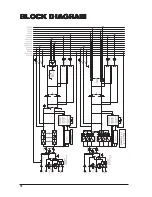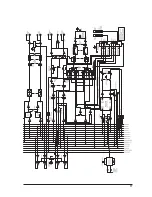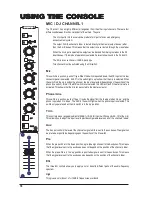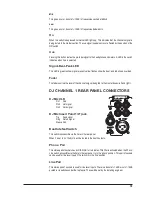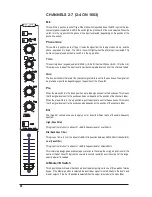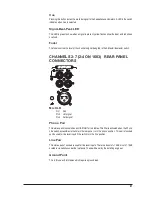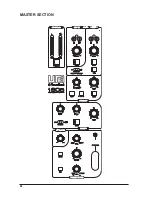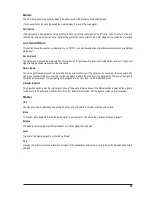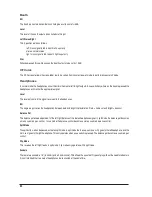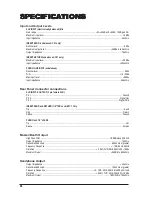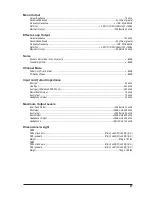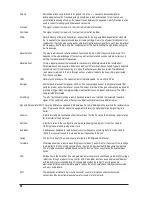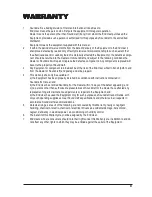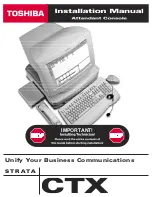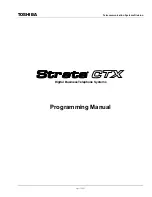
30
Polarity:
Sometimes erroneously referred to as ‘phase’ this is the + / - sense of a balanced signal or
loudspeaker connection. Reversed polarity should be avoided and checked for as it can cause
uncomfortable phasing effects as the listener moves between the speakers. Polarity Reverse is often
used to correct for wrongly wired cables and connectors.
Pre-fade:
The signal is taken from a point in the circuit which is before the fader.
Post-fade:
The signal is taken from a point in the circuit which is after the fader.
RIAA:
Record Industry of America Association, responsible for the long established equalisation standard
that is applied to the signal produced by a turntable cartridge. Due to the physical limitations of vinyl
reproduction the stylus produces a reasonable level high frequency signal but a much less lower level
low frequency. An RIAA pre-amplifier compensates for this by attenuating the high and boosting the
low frequencies.
Reverberation:
The way in which sound reflects and bounces around the room after the source is removed. This
depends on the size and shape of the room as well as the materials such as carpets, curtains and
clothing that absorb certain frequencies.
Reverb Effect:
This is a signal processor that connects to the console to artificially simulate the reverb effect.
Parameters such as decay time, diffusion and amount of reverb can be controlled. Typically selected
sounds are sent to the processor by turning up the channel post-fade aux sends. The processed
(wet) signal is returned to the mix through a channel where it adds to the direct (dry) signal routed
from the channel fader.
RPM:
Revolutions Per Minute. The measurement of turntable speed, 33, 45 and 78 RPM.
Sampler:
Another performance effect popular with DJs. The channel signal is sent to a digital processor that
samples (stores) a short duration of sound. The output is returned through a channel and replayed by
pressing a trigger. Many samplers provide creative effects such as repeat and reverse. The UREI
sampler is BPM activated.
Scratching:
The art of rhythmically rocking a record back and forward on a turntable to manipulate the audio
signal. Often combined with a differing cross fader technique to achieve different styles.
Signal-to-Noise Ratio (SN): This is the difference expressed in dB between the normal 0dB operating level and the residual noise
floor. It represents how far above the equipment hiss level the signal operates. A higher figure is
better.
Slip mat:
A fabric turntable mat positioned under the record so that the DJ can hold it stationary ready to let go
for a fast start at the point cued.
Split Cue:
A facility to listen to the cue signal in one ear while keeping the program in the other. Used for
matching the beat while cueing a new track.
Sub Bass:
A loudspeaker designed to reproduce only very low frequency sound, typically from around 30 to
120Hz. A crossover is used to route only the low frequencies to the sub.
Tempo:
The rhythmic beat of the music, usually referred to in BPM (Beats Per Minute).
Turntable:
Otherwise known as a ‘record deck’ this plays vinyl discs. It is common for the output of the cartridge
to plug directly into the mixing console ‘phono’ input which provides the RIAA equalisation required.
The turntable usually has variable speed control so that the DJ can synchronise the beat between
tracks.
VCA
Voltage Controlled Amplifier: An audio gain element whose level is controlled by a remote DC voltage
rather than through a fader or rotary control. VCA Cross fader functions as an audio cross fader but
with the audio level controlled by a DC voltage produced by the fader. This voltage can be
electronically filtered and is therefore able to remove the clicks, scratches and dropouts associated
with worn audio faders.
XLR:
The professional standard 3 pin round connector used for microphone and other balanced
connections. Equipment female sockets are for inputs, male for outputs.
Summary of Contents for 1605
Page 16: ...16 BL BL BL BL BLOCK DIA OCK DIA OCK DIA OCK DIA OCK DIAGRAM GRAM GRAM GRAM GRAM...
Page 17: ...17...
Page 22: ...22 MASTER SECTION...
Page 32: ...32...

